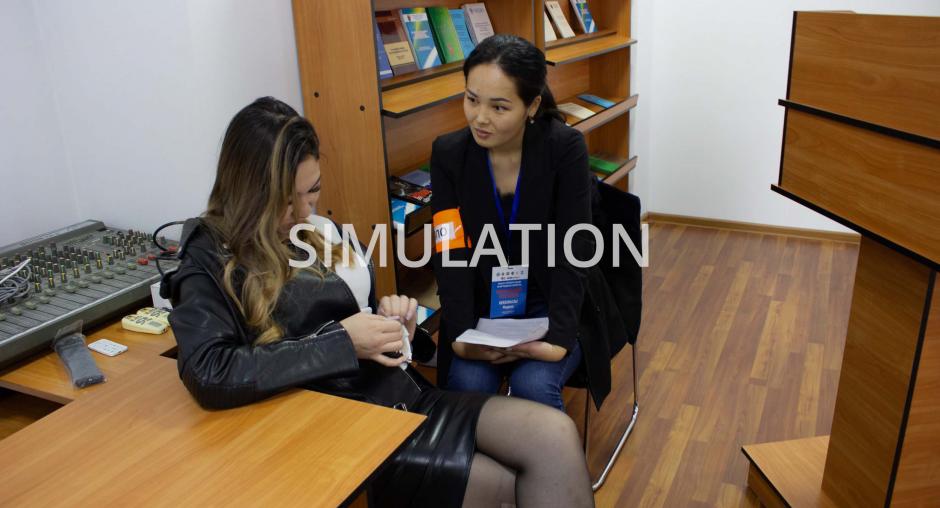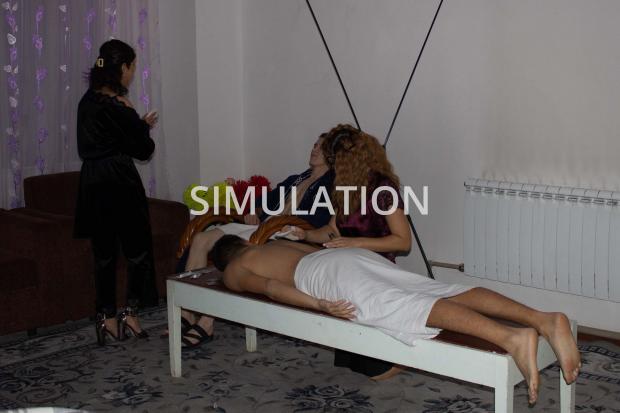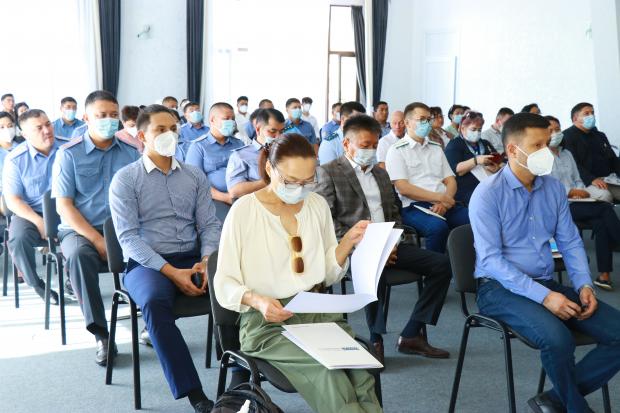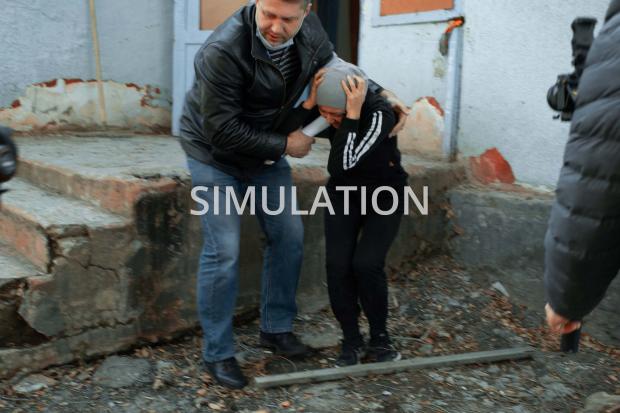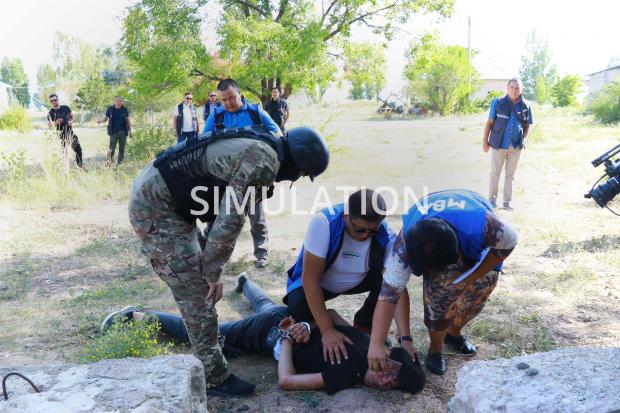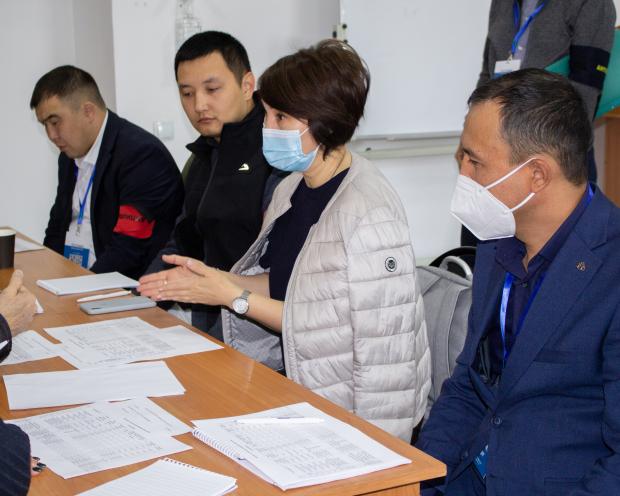A gender-sensitive response to human trafficking
OSCE simulation-based exercises for frontline responders in Central Asia
One of the reasons why trafficking in human beings is so difficult to fight is that it preys on people’s vulnerabilities and society’s weaknesses. Criminals exploit gender inequality and gender stereotypes, to abuse their victims and escape prosecution. Human trafficking is a complex crime that demands a complex, gender-sensitive response.
In three Central Asian countries – Kazakhstan and for the first time in Kyrgyzstan and Tajikistan – frontline responders honed their skills in dealing with human trafficking’s complexity, including its gender aspects, in pioneering simulation-based training exercises offered in autumn 2021 by the OSCE.
Practitioners from the General Prosecutor’s offices, the ministries of the interior, of health and social welfare, law enforcement agencies, state social service providers and non-governmental organizations (NGOs) participated. Actors recreated realistic scenarios of trafficking for sexual and labour exploitation at a fictitious brothel, a massage parlour, a construction site and an agricultural field.
Careful preparation
The success of simulation-based training depends on careful preparation. The exercises began with a day of theoretical briefings. Participants reviewed the challenges in combating human trafficking in the OSCE region and their countries and discussed relevant international commitments and aspects of national legislation. They learned about the rules of engagement in the exercise and what needs to be taken into account in the OSCE’s victim-centred, human rights-based and gender-sensitive approach to combating human trafficking.
All 57 OSCE participating States have recognized discrimination based on sex among the root causes of trafficking (PC DEC/557, MC DEC/10/11) and emphasized the need to address gender-specific aspects in the anti-trafficking response (MC DEC/6/17 and MC DEC/7/17).
A victim-centred approach to sex trafficking
Gender inequality and unequal distribution of social and economic opportunities make women and girls susceptible to trafficking for sexual exploitation. An important part of the simulation-based exercise focused on making sure that survivors receive adequate protection and benefit from resources that have been developed to help victims.
At the same time, the exercise made participants aware that not all victims of sexual exploitation fit the stereotype of vulnerable young woman. Sexual violence against men and boys is one of the most hidden forms of human trafficking. Perpetrators use violent and harmful masculinities to denigrate their victims and violate their dignity. There is a need to ensure specialized protection for all.
Early inclusion of social services
There are also specific gender aspects to be taken into account when responding to trafficking of men and boys for labour exploitation. Antiquated views of masculinity are harmful and might prevent men from coming forward. If a boy is exploited for forced criminality, gender stereotypes tend to prevail and protection measures may not be available. Just as men and boys can be exploited for sex, women and girls can be exploited for labour.
The simulation exercise demonstrated the importance of including social workers and specialized NGOs early in the response to human trafficking. They possess the experience and expertise for proper identification, referral and sustained protection of survivors.
Dealing with perpetrators
Gender stereotypes can also compromise the proper identification of perpetrators. In one of the scenarios in the simulation-based training, the criminal keeping women in a brothel against their will was a woman.
One of the most valuable aspects of the simulation-based training was the opportunity to practice co-ordinating police, SWAT teams, criminal investigators and social workers in real time. While dealing with suspected criminal, it is important to follow the right procedure. This includes police officers identifying themselves by showing their badge, explaining the suspects their rights and avoiding undue use of force.
Establishing trust with victims
Gender dynamics are key to establishing trust with a survivor of human trafficking. The training demonstrated the need to develop prevention and protection services that are adapted to the needs of all victims. This includes taking into account the personal history of victimhood, cultural parameters and individual preferences when deciding on pairing the victim with a criminal justice officer. A woman police officer may be better placed than a man to question a female victim of human trafficking.
It also means providing victims with trained psychological support, both during questioning and also in the longer term, for example during the often-difficult reestablishment of contact with their families.
Co-ordination and consultation
A hallmark of the simulation-based exercises were comprehensive consultations among both governmental and non-governmental agencies. “The training was extremely useful in understanding the urgent need for mutual co-operation between law enforcement authorities, prosecutorial offices and social services,” a participant in Kazakhstan said.
“Unconventional”, “practical”, “very realistic” were most often used when participants were asked to evaluate their experience. Multi-agency co-ordination, focus on the victim’s concerns and a gender-sensitive approach are absolutely essential to a successful response to human trafficking, they agreed.
The simulation-based training exercises were co-organized by the Office of the OSCE Special Representative and Co-ordinator for Combating Trafficking in Human Beings (OSR/CTHB), which developed the methodology and has been putting it into practice since 2016, and the OSCE Programme Offices in Nur-Sultan, Bishkek and Dushanbe, respectively. They are part of ongoing efforts by all three OSCE field presences to assist the host countries in combating human trafficking. See also the OSR/CTHB study Applying Gender-Sensitive Approaches in Combating Trafficking in Human Beings.

